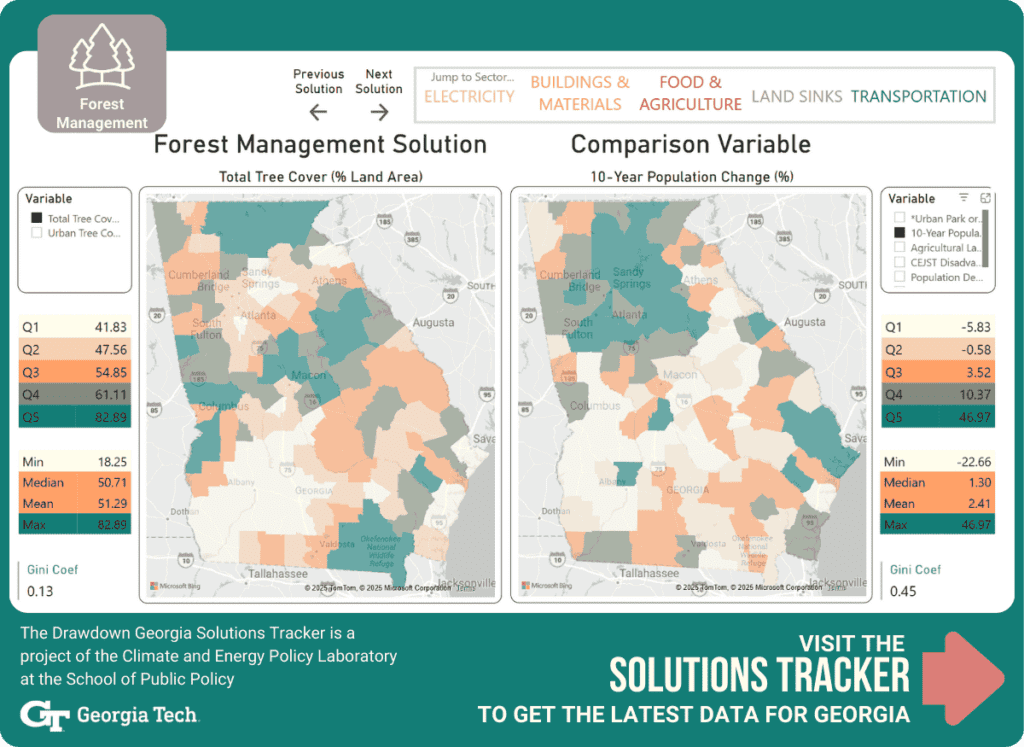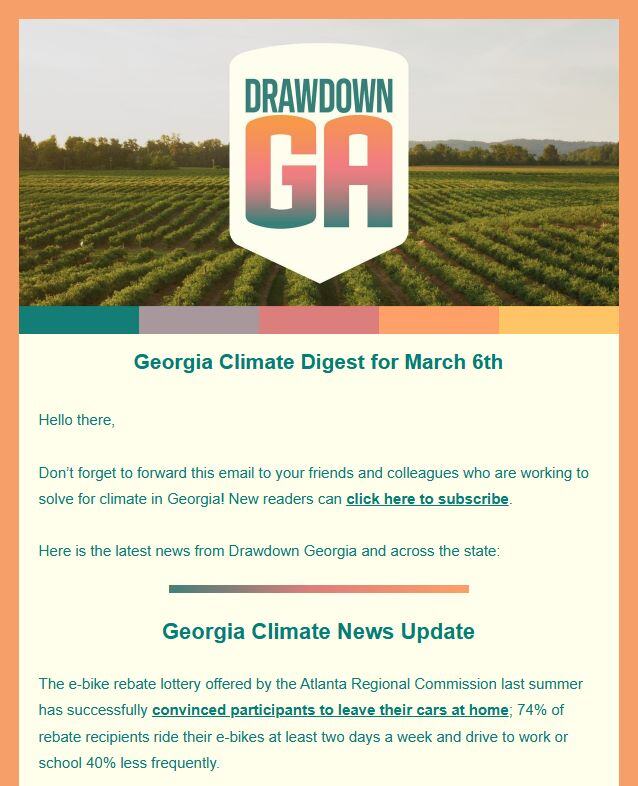The Benefits Of Forest Management
Restoring and protecting temperate-climate forests has many benefits, including carbon sequestration from trees, soil, and other vegetation.
Forest Management Resources from Drawdown Georgia
Market Readiness And Available Technology
Approximately 64% of Georgia's land consists of naturally recruited and planted temperate forests, and Georgia is the nation's number one forestry state, so this is a market-ready solution (Edwards et al. 2013). For example, about 150,000 acres are planted with pine seedlings in Georgia each year.

What Is The Potential Impact Of Expanding Georgia's Forest Acreage On Carbon Emissions?
The Drawdown Georgia research team estimates that Georgia could reduce emissions by one megaton (Mt) of CO2e by increasing forest cover by 3.5% with mixed hardwood & and pine species such as loblolly (Pinus taeda), longleaf (P. palustris), and shortleaf (P. echinata) tree species.
What is the Carbon Emissions Reduction Potential by 2030?
Achievable reduction potential is derived by taking the technical reduction potential, outlined below, and developing a more realistic forecast that takes current rates of deployment, market constraints, and other barriers into consideration.
For forest management, the Drawdown Georgia research team has calculated the achievable reduction potential to be 1.73 Mt of CO2e.
What Is the Upper Limit of Carbon Emissions Reduction Potential?
Technical reduction potential reflects the upper limit of emissions reductions for this solution without regard to the constraints that exist in the real world, such as economic or political considerations.
For forest management, the Drawdown Georgia research team has calculated the technical reduction potential to be 4.3 Mt.
Georgia’s forests offset approximately 23% of the state’s CO2 emissions and can sequester one to four tons of carbon per acre per year. Based on Forest Inventory and Analysis (FIA) data, between 2007 and 2017, forests of Georgia accumulated an average of 27 Mt CO2 annually in living tree biomass above and below ground. A preliminary estimate of annual carbon uptake in state soils is 3 megatons (Mt) of CO2. This brings the total estimated annual carbon sequestration of Georgia’s forests to 30 Mt CO2.
An increase in this annual carbon sequestration by 1 Mt CO2 by 2030 could be achieved by expanding Georgia’s forest acreage by 2.9%. To put this in perspective, a 15% increase in forest acreage would be achieved if Georgia’s forests in 2030 covered the same acreage as they did in 1974.
How Reliable Is Our Estimate For This Drawdown Georgia Climate Solution?
With our large extent of temperate forests and the importance of forestry for the state’s economy, we have abundant local experience and data availability on Georgia’s temperate forests from universities; county, state, and federal agencies; NGOs; and businesses.
Cost Competitiveness Factors
Almost 60% of Georgia's current state consists of native and planted temperate forests, so little cost would be associated with maintaining these forests. For planted pines with management, the cost of aboveground carbon storage is about $11 per ton of carbon. The cost for unmanaged forests is essentially $0 per ton of carbon in Georgia.
Beyond Carbon Attributes
Positive environmental impacts from this solution include improved air quality based on the natural ability of trees to provide oxygen, as well as increasing wildlife habitats and biodiversity. Estimates suggest that trees and forests removed 17.4 million tonnes (t) of U.S. air pollution in 2010. Improved air quality positively impacts the public health of communities in the surrounding areas, which was valued at $6.8 billion in
annual health effects in 2010, avoiding over 850 deaths and 670,000 acute respiratory symptoms. Forests offer improved water quality through soil protection and reduced water runoff and evapotranspiration.
Managing and protecting forests generates jobs for Georgians. Another positive benefit is the improved quality of life forests provide by offering recreational opportunities for people in the local community and/or tourists. Since there is little to no cost for these recreational opportunities, this solution is highly accessible to low-income families.



